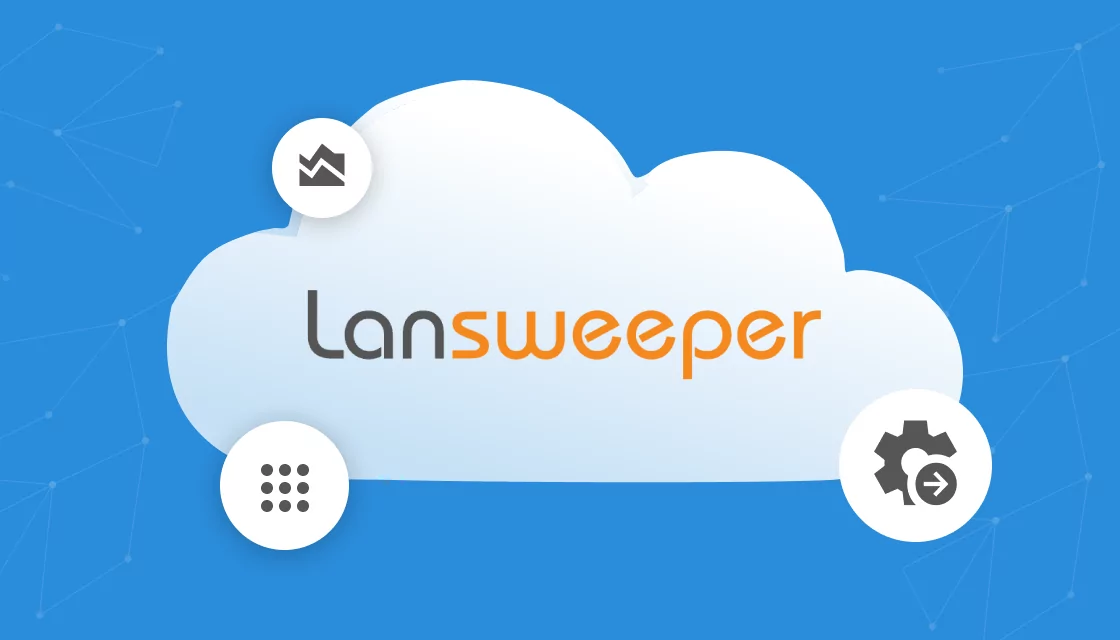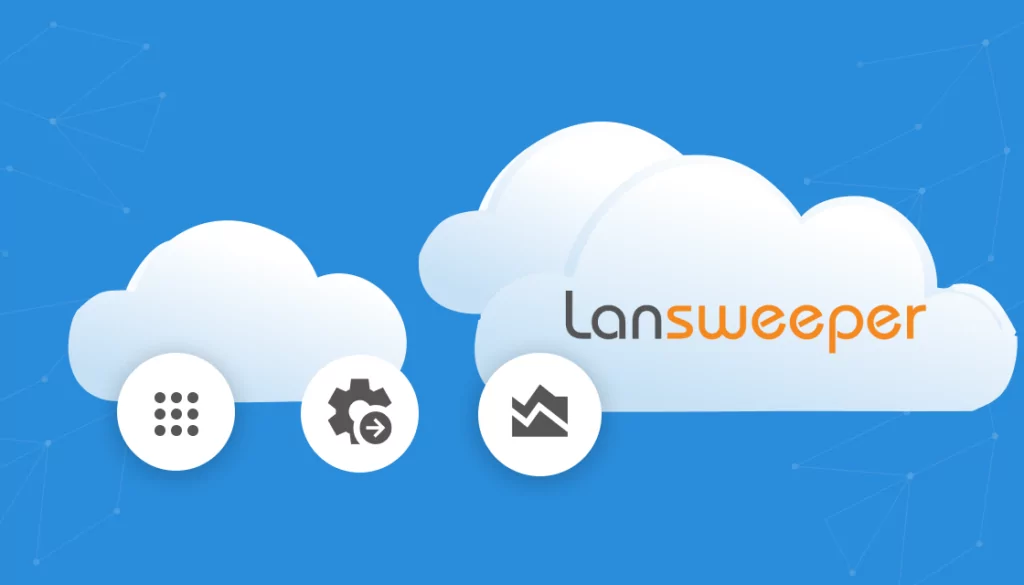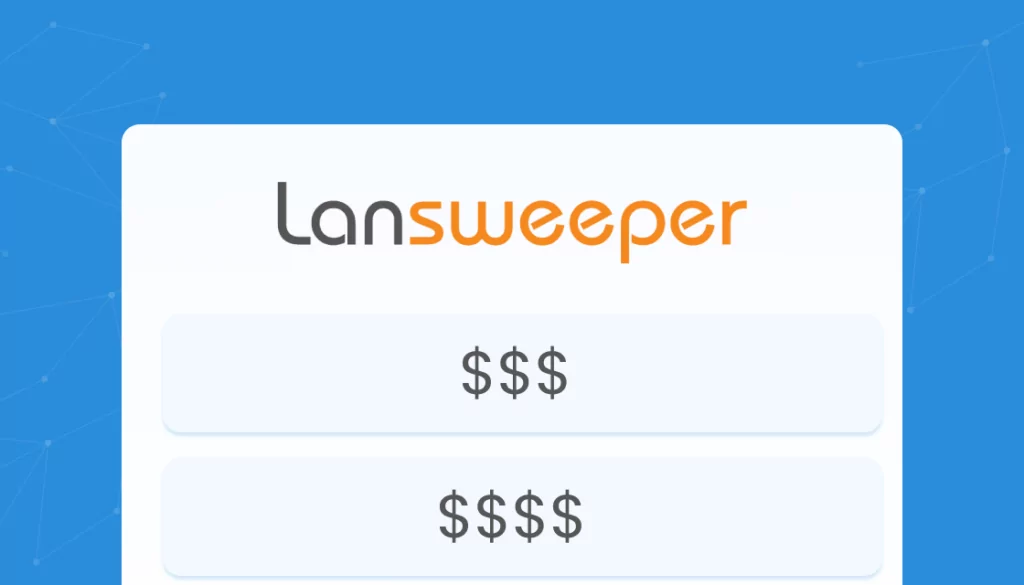What Is Lansweeper?
Lansweeper is an IT asset management and network inventory tool that provides insights into a company’s IT environment. It automatically scans devices connected to the network, including workstations, servers, and virtual machines, to create a centralized database of hardware and software assets.
Beyond simple inventory tracking, Lansweeper offers features like detailed reporting, software license management, and IT risk auditing. It is a useful resource for IT administrators seeking to manage asset management tasks.
With Lansweeper, users can maintain up-to-date records of all IT assets. The platform’s set of APIs allows integration with other IT management and service desk tools. Its interface and search capabilities make it easy to generate custom reports and dashboards. Additionally, Lansweeper supports compliance by ensuring that software licenses are tracked and managed.
Table of Contents
ToggleDrawbacks and Limitations of Lansweeper
While Lansweeper offers IT asset management capabilities, it has several notable limitations, reported by users on the G2 platform:
- Ticketing system issues: Users often experience issues with ticket reception and tracking. Tickets that meet certain criteria are sometimes difficult to backtrack, and email recipients may not see responses due to emails being marked as spam or not delivered at all. This can disrupt communication and delay problem resolution.
- Remote connection and Apple/Mac support: The tool does not perform well when accessed remotely, and lacks support for Apple/Mac environments, limiting its usefulness in diverse IT setups.
- Non-responsive customer support: Many users report that support requests sent via email are often ignored, and they resort to contacting sales representatives to resolve technical issues.
Notable Lansweeper Alternatives and Competitors
1. Faddom
Faddom visualizes your on-premises and cloud infrastructure in as little as one hour without agents. It maps all your servers and business applications instantly and in real-time, highlighting their interdependencies.
-
- Faddom is agentless and doesn’t require credentials
-
- It is cheap, starting at $10K/year
-
- Map the entire environment in real-time, updating 24/7
-
- Quick: One person can map the entire organization in an hour
Learn more about Faddom for asset documentation and discovery or start a free trial to the right
2. ServiceNow IT Service Management
ServiceNow IT Service Management (ITSM) is a platform aiming to deliver IT services and create experiences that improve productivity across organizations. It uses AI and machine learning to accelerate resolution of issues. The platform consolidates all service instances into a single system, reducing complexity.
Features of ServiceNow’s IT Service Management:
-
- Now Assist for ITSM: Enhances productivity with generative AI experiences.
-
- Configuration Management Database (CMDB): Tracks dependencies and relationships of supported IT services to ensure continuity.
-
- Digital product release: Speeds up time to market with automated readiness and visibility into releases.
-
- Knowledge management: Improves efficiency through knowledge sharing and collaboration.
-
- Incident management: Restores services quickly with intelligent routing and built-in collaboration tools.
Source: ServiceNow
3. SolarWinds Service Desk
SolarWinds Service Desk is a cloud-based, AI-powered ITSM platform aiming to maximize productivity and accelerate issue resolution with rapid time-to-value. This platform is ITIL-ready, catering to a range of service needs through various management modules and a configuration management database (CMDB).
Features of SolarWinds Service Desk:
-
- Incident, problem, release, and change management: Provides modules to manage ITIL processes efficiently.
-
- Automation: Automates ticket classification, routing, and correlation, enhancing efficiency with self-service capabilities and an assistive knowledge base.
-
- IT asset management (ITAM): Manages the full lifecycle of hardware, software, licenses, contracts, and more, with detailed audit history.
-
- Service catalog: Automates processes, tasks, and approvals for departments like HR, facilities, and finance, improving employee services.
-
- Integration and APIs: Offers REST APIs and integrations with SolarWinds observability solutions, ChatOps tools, and other applications.
Source: SolarWinds
4. Device42 Inventory and Asset Management
Device42 provides asset auto-discovery and customizable asset types to document all IT assets across infrastructure deployment. With its combination of agentless and agent-based discovery methods, Device42 ensures an accurate and audit-ready inventory of physical, virtual, cloud, and hybrid assets.
Features of Device42 Inventory and Asset Management:
-
- Comprehensive auto-discovery: Uses agentless and/or agent-based tools to automatically discover and document assets across physical, virtual, and cloud infrastructures.
-
- Physical and virtual inventory: Tracks and manages hardware and software inventory, both on-premise and in the cloud.
-
- Customizable asset types: Allows users to choose from predefined asset types or create custom types to suit specific needs.
-
- Relationship tracking: Visualizes and tracks relationships between assets to understand operational dependencies and impacts.
-
- QR and barcodes: Auto-generates QR codes and barcodes with built-in smartphone support for easy asset management.
Source: Device42
5. ManageEngine AssetExplorer
ManageEngine AssetExplorer is a web-based IT asset management (ITAM) software to help organizations monitor and manage their network assets from the planning phase to disposal. This tool ensures discovery and management of all network assets, including software and hardware, and facilitates software license compliance, purchase order tracking, and contract management.
Features of ManageEngine AssetExplorer:
-
- Unified asset discovery: Automatically discovers all Windows, Linux, and macOS assets in the network using a unified agent.
-
- Software and hardware management: Monitors and manages the inventory of software and hardware assets.
-
- Complete asset lifecycle management: Tracks assets from procurement to disposal, managing all stages of the asset lifecycle.
-
- Software license compliance: Ensures compliance with software licenses and helps curb unauthorized software usage.
-
- Informed decision-making: Supports informed decisions about hardware and software purchases throughout the IT lifecycle.
Source: ManageEngine
6. BMC Helix Discovery
BMC Helix Discovery is an IT asset and service management tool that provides visibility and control over IT environments. It helps organizations improve operations by offering a clear view of IT assets and service dependencies across cloud and on-premises infrastructure.
Features of BMC Helix Discovery:
-
- Agentless continuous discovery: Automatically discovers and maps relationships between assets across cloud and on-premises environments, keeping data current without manual updates.
-
- Blueprint-automated service modeling: Visualizes and controls infrastructure supporting various business needs with a library of service modeling blueprints.
-
- Data reconciliation: Unifies data from diverse topology sources to ensure a comprehensive and accurate view of IT assets and services.
-
- Real-time service awareness: Connects service models, topology, and telemetry to pinpoint root causes and visualize related impacts.
-
- Crucial context: Merges real-time contextual data with historical performance trends for proactive outage alerting and AIOps insights.
Source: BMC
7. Ivanti Neurons for ITAM
Ivanti Neurons for ITAM is a resource management software that consolidates IT asset data, enabling organizations to track, configure, optimize, and manage assets throughout their lifecycle. Its configurable design allows users to define their workflows or implement out-of-the-box processes, providing visibility and control over IT assets.
Features of Ivanti Neurons for ITAM:
-
- Visibility of IT assets: Provides a picture of hardware, server, client, virtual, cloud, and software assets from purchase to disposal.
-
- Efficiency improvement: Saves time and reduces resources spent on managing assets by providing insights into hardware and software.
-
- Excessive spending limitation: Reduces downtime, increases productivity, and offers an accurate picture of the IT environment to enable better decision-making.
-
- Risk reduction: Avoids financial risks and security threats, reduces theft and losses, identifies at-risk machines, and ensures appropriate resource usage.
-
- Real-time discovery and automated reconciliation: Pre-populates the asset repository with real-time discovery, automated reconciliation, and normalization.
Source: Ivanti
8. Atera
Atera aims to increase efficiency, provide better service to users, and simplify the work-life of IT teams. This platform integrates remote monitoring and management, helpdesk, and reporting features, helping IT departments transform everyday IT operations.
Features of Atera:
-
- Atera AI: Eliminates Tier-1 support with Autopilot, enabling instant response for every issue. It upskills junior technicians and allows senior talent to focus on strategic initiatives, cutting ticket SLAs by nearly 100%.
-
- Patch management: Automates the management of Windows, Mac, and Linux software patches, saving time and ensuring cybersecurity best practices across end-user devices.
-
- Helpdesk and ticketing: Offers an intuitive system that enables fast issue response and improves ticketing processes with automations, AI, and advanced collaboration features.
-
- Cybersecurity: Provides built-in security adhering to industry standards such as MFA and smart logging and reporting. It integrates with top antivirus, backup, and email security partners.
-
- Remote access: Allows management of end-user devices anywhere. Supports AnyDesk, Splashtop, TeamViewer, and ScreenConnect for easy remote sessions.
Source: Atera
9. NinjaOne IT Asset Management
NinjaOne IT Asset Management software provides tools to discover unmanaged devices and gain real-time insight into all managed IT assets. This enables organizations to reduce costs, increase productivity, and improve security by maintaining complete, accurate, and up-to-date asset information.
Features of NinjaOne IT Asset Management:
-
- Automated IT asset discovery and management: Ensures all endpoints accessing company data are fully managed. Uses Microsoft Active Directory for automated asset discovery and deployment. SNMP-enabled devices are easily discoverable through the network monitoring probe.
-
- Real-time IT asset information: Automatically collects and updates hundreds of data points on every managed endpoint, providing accurate, up-to-the-minute inventory data for better decision-making. Integrates across Ninja endpoint management, remote access, and service desk solutions.
-
- Efficient asset grouping and management: Allows automatic grouping and searching of assets by natively collected data points. Flexible custom fields enable the collection of almost any data on an endpoint for device classification and management.
-
- Change tracking and alerts: Generates alerts and creates tickets for hardware changes, software additions or removals, and health and performance issues, ensuring visibility into managed endpoints.
-
- Software monitoring and management at scale: Provides a live inventory of all software installed across managed assets. Generates alerts and tickets for software installations or removals, enabling installation and uninstallation of applications at scale.
Source: NinjaOne
10. Freshservice IT Asset Management
Freshservice IT Asset Management (ITAM) aims to optimize costs, minimize issues, and automate service operations. It offers visibility into on-premise assets, cloud resources, and SaaS applications, ensuring efficient service management and asset operations.
Features of Freshservice IT Asset Management:
-
- Asset visibility: Provides discovery, optimization, and management of assets. Auto-captures cloud and on-premise asset details, and tracks assets using QR and barcode scanning with a mobile app.
-
- Multi-source CMDB: Offers end-to-end asset visibility with a CMDB that enhances service operations, root cause analyses, and change deployments. Real-time connectors with built-in discovery solutions, identity providers, and endpoint management tools ensure visibility.
-
- Unified lifecycle management: Automates asset lifecycle management from procurement to retirement. Supports onboarding, cloud resource provisioning, vendor and inventory management, approval planning, depreciation calculation, and lifecycle alerts.
-
- Inventory management: Maintains an inventory of IT and other assets using discovery solutions. Provides a single source of truth for efficient planning of service delivery processes with native and connected discovery tools.
-
- Purchase order management: Tracks purchases, manages vendors and approvals, and simplifies fulfillment processes, eliminating the need for manual paperwork.
Source: Freshservice
Conclusion
Choosing the right IT asset management tool requires careful consideration of various factors such as user experience, automation capabilities, security features, remote management support, and comprehensive discovery methods. Each Lansweeper alternative offers unique features tailored to different organizational needs, from robust automation and advanced AI capabilities to extensive integration options and efficient lifecycle management. By evaluating these aspects, organizations can find a tool that not only meets their current requirements but also scales with their future growth, ensuring seamless IT operations and enhanced productivity.
Learn more about Faddom for asset documentation and discovery or start a free trial to the right





